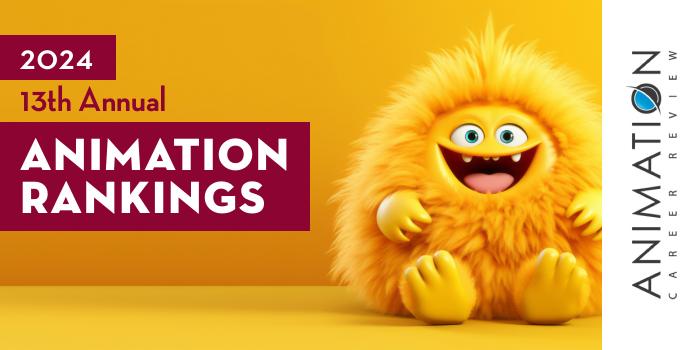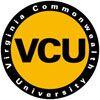
Start your career as a 2D animator for film, TV and games! CG Spectrum’s offers specialized online career training and mentorship from expert animators working at top studios. Get access to career services and a supportive community. Learn more.

| Ranking | School | City |
|---|---|---|
| 1 | Virginia Commonwealth University | Richmond |
| 2 | Virginia Polytechnic Institute and State University | Blacksburg |
Our 2024 ranking -our thirteenth annual- of the top animation school programs in Virginia. For an explanation of the ranking criteria, click here.

Virginia Commonwealth University’s (VCU) School of the Arts (VCUArts) houses the Department of Kinetic Imaging (KI), which has programs for students who are interested in video, sound, and animation as they relate to filmmaking, experimental video, and art-making. Other KI Department highlights include lectures, workshops, and performances by visiting artists; access to state-of-the-are facilities, studios, and labs; and internship opportunities.
For students seeking a career in animation, the KI Department at VCU has Kinetic Imaging BFA program that requires a minimum of 120 credit hours. At the graduate level, students can earn a Fine Arts MFA with a concentration in Kinetic Imaging. Both programs are multidisciplinary and explore areas such as animation, video, virtual reality, emerging art, and sound.
BFA students will complete courses such as Space Research; Animation I-IV; Survey of Art; Video I-III; Time Studio; Animation Practices; 3D Computer Animation I-II; Creative Code and Electronics; 3D Computer Art; Virtual Interactive Worlds; Sound Communication I-II; Concept and Development Studio; Media Arts Survey; Video Practices; and Critical Issue in Media. The program ends with the Research and Production, I and II courses. Completed across the fall and spring semesters, the courses consist of the critical analysis and development of a culminating project with emphasis on implementation, execution, and presentation.
The Kinetic Imaging BFA program at Virginia Commonwealth University takes four years to complete, full-time. Graduates are prepared to pursue titles such as 2D Animator, 3D Animator, Director, Sound Designer, Motion Graphics Artist, and UI/UX Designer.
The Fine Arts-Kinetic Imaging MFA at VCU is a 60 credit hour, studio-based program designed to support six-eight students. This flexible program explores animated arts, emerging media, coding, sound art, interactivity, installation, and mediated performance. Each semester, students will complete a graduate seminar and a graduate studio class consisting of vigorous studio production. Students will also can select an additional elective to help meet their individual studio and research goals.
Other KI MFA features include 24/7 access to personal studios and animation, video, and sound production spaces; opportunities to teach in the undergraduate KI program; and visiting artists that host talks and one-on-one studio visits with graduate students. The culminating experience for the KI MFA is the exhibition of the student’s best work at VCU’s Anderson Gallery.
The Virginia Commonwealth University Fine Arts/Kinetic Imaging MFA program can be completed in two years, full-time. Graduates are prepared for leadership roles across creative industries and in the technology sector, science and medicine, architecture, and education, among others.
Founded in 1838, Virginia Commonwealth University is a top 100 research university that serves approximately 28,410 students. The largest employer in Richmond, Virginia, VCU provides more than 200 academic programs across 15+ colleges, schools, and centers. Virginia Commonwealth University accredited by the Southern Association of Colleges and Schools Commission on Colleges (SACSCOC).

The School of Visual Arts (SOVA) Virginia Polytechnic Institute and State University (Virginia Tech) is part of the College of Architecture and Urban Studies. SOVA has two paths to study animation. At the undergraduate level, students can earn a Creative Technologies (CT) BFA. Graduate students can earn a CT MFA.
The SOVA CT BFA explores theories, production methods, and digital media topics that prepare students for a various digital pipelines and production processes. Students in this program will develop professional skills in animation, video art, contemporary fine arts, 3D modeling, gaming, and virtual reality. Course examples include Topics in Computer Animation (Character Animation, Character Modeling, Video Game Design, and Processing); 3D Computer Animation; Topics in New Media Art (2D Motion Graphics, Digital Illustration, and Digital Video); Computer Animation Studio; and Topics in Digital Art + Design (Multimedia Studio Max/MSP). BFA students will complete a final project and portfolio to graduate.
The CT MFA at Virginia Tech is a cross-disciplinary, terminal degree that explores digital and new media technologies. Potential research subjects for the program include animation, 3D modeling, video art, interactive design, games, installation, virtual environments, visualization, project mapping, coding, simulations, and emerging media. MFA students will complete a minimum of 60 graduate-level credit hours and present an MFA Thesis Project to graduate.
Students in both the BFA and MFA CT programs may participate in the SOVA Study Abroad Program (three weeks in Europe), visiting artist workshops, exhibitions, and the Virginia Tech Internship Program.
Graduates of the Virginia Tech Creative Technology program go on to establish successful careers in the animation, film, and visual effects industries; motion graphics; game art, design, and development; virtual reality (AR/VR); UI/UX; production; and education.
Virginia Tech alumni have been hired at Walt Disney, Google, Epic Games, Apple, Ogilvy, The Pokemon Company International, Amazon, Fjord, Sinclair Broadcast Group, Sprout Studios, Apex Systems, DXA Studio, Lockheed Martin, and Atomic Productions.
Virginia Polytechnic Institute and State University opened on October 1, 1872 as Virginia Agricultural and Mechanical College. The school serves more than 38,000 students enrolled in approximately 280 undergraduate and graduate programs across nine colleges and schools. Virginia Tech is accredited by the Southern Association of Colleges and Schools Commission on Colleges (SACSCOC).